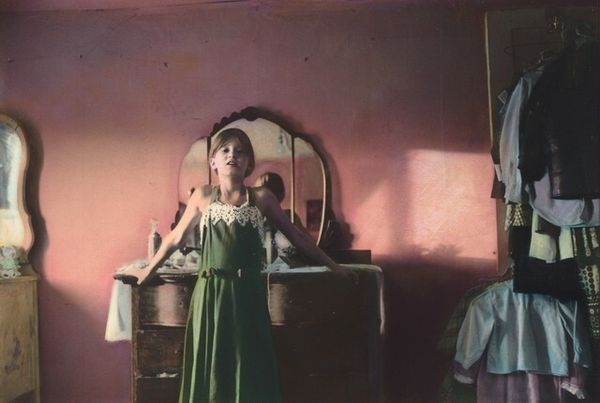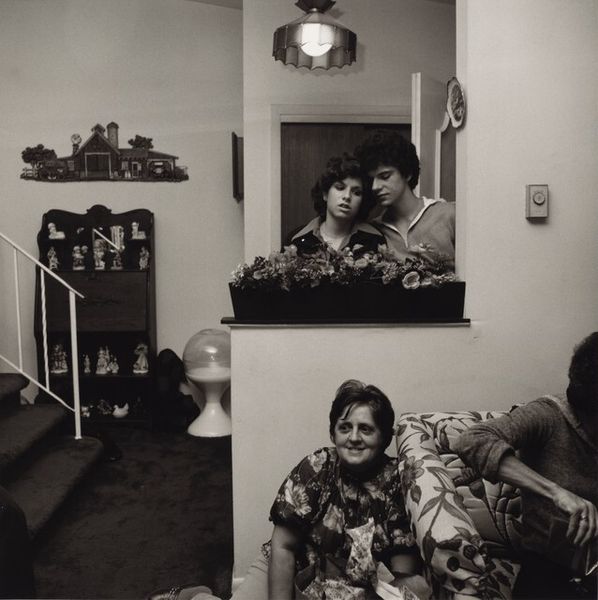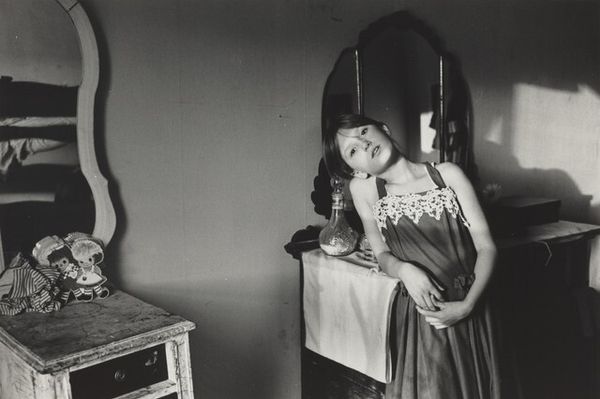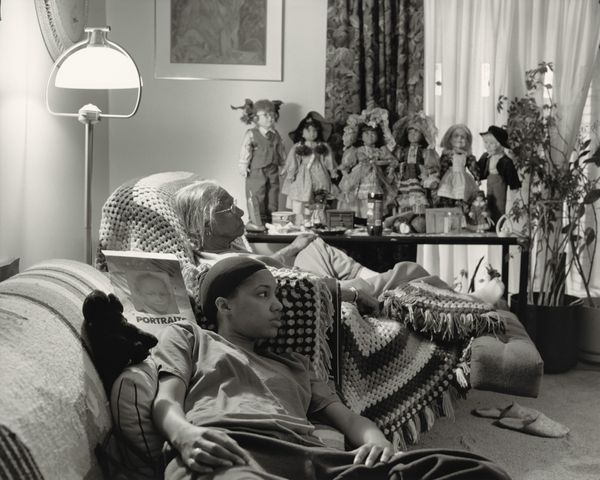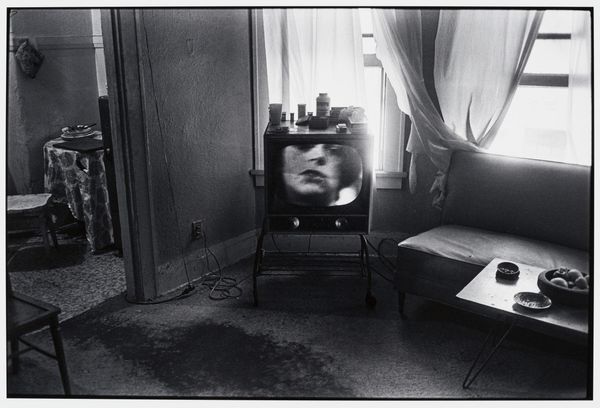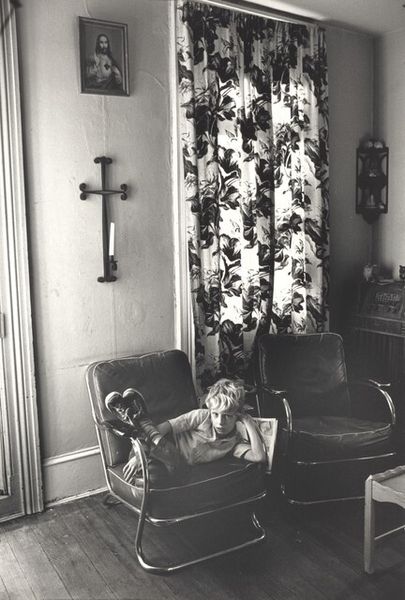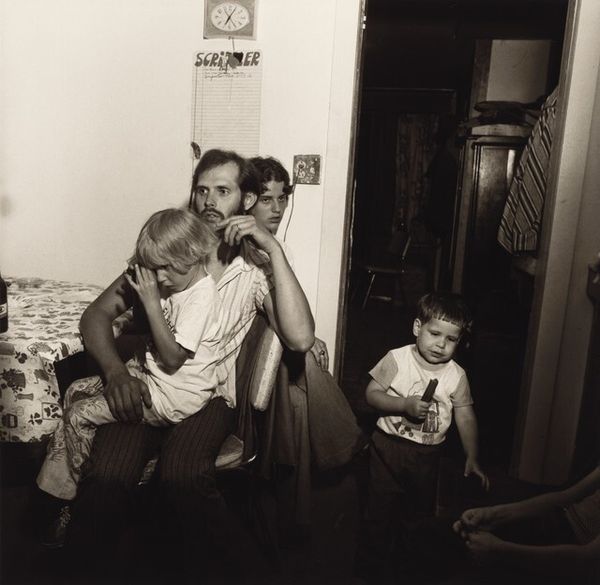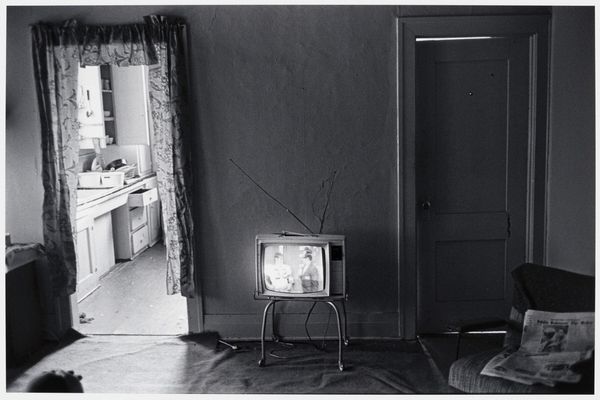
photography, gelatin-silver-print
#
portrait
#
wedding photograph
#
black and white photography
#
social-realism
#
photography
#
gelatin-silver-print
#
monochrome photography
#
genre-painting
Dimensions: image: 36.8 × 37.5 cm (14 1/2 × 14 3/4 in.) sheet: 50.3 × 40.5 cm (19 13/16 × 15 15/16 in.)
Copyright: National Gallery of Art: CC0 1.0
Curator: Larry Fink captured this scene at "Oslin's Graduation Party, Martins Creek, Pennsylvania" in 1977, rendered in a gelatin silver print. There's a striking intimacy to it, wouldn't you agree? Editor: Absolutely. My first impression is one of melancholy. The composition centers on this young woman, seemingly detached amidst what should be a celebratory gathering. There's a heavy, almost somber feel to the photograph. Curator: Fink was known for his social realism, focusing on the emotional lives of people, particularly within specific subcultures and social classes. He had an extraordinary capacity to capture ordinary people living out everyday situations, in this case it's clearly about social rituals and emotional states. The black and white helps solidify the themes here, I would say. Editor: Precisely. Black and white distills the scene to its emotional core. I keep returning to those figures on the table – the graduate doll, the couple statuette, the beer bottle. Are they symbolic? Perhaps emblems of anticipated success, love, and adulthood that are juxtaposed with her less-than-gleeful expression? Curator: I think that's a good observation. Consider also the lace tablecloth and somewhat drab surroundings. These details tell us much about working-class life in small-town Pennsylvania at the time. This wasn’t a glamorous affair, but that's where Fink found genuine interest. It represents an important time in American history, both economically and culturally. Editor: It's almost a visual shorthand for a certain type of American experience, isn’t it? Even the patterned curtain backdrop feels significant, domestic yet weary. One sees the wear, and also something timeless. Her downcast look makes the photograph all the more intriguing; what is she feeling or considering? Curator: What Fink’s great at is offering a non-judgmental portrayal of his subjects. We get an unfiltered slice-of-life—it’s not about exploitation; it’s about observation. This is the point that I try to communicate in most exhibits when his photography is included. He had no moral standing in these communities he entered to document the lives of the everyday people. Editor: A keen point. It’s a photograph open to individual readings, yet anchored in the social realities of its time. Ultimately, this quiet intensity grants the image an enduring power. Curator: It’s fascinating to think how photography and photojournalism were both viewed during this time period. Fink really had to contend with the public's need for raw imagery, not photos that had hidden implications. The honesty remains very raw and genuine.
Comments
No comments
Be the first to comment and join the conversation on the ultimate creative platform.
